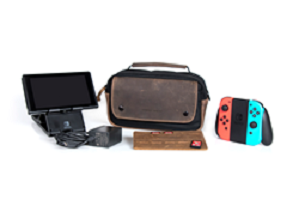Utah Cuts Misrouted 9-1-1 Calls in Half with Motorola Solutions’ Next Generation 9-1-1 Technology

Motorola Solutions* today announced that its National Emergency Number Association (NENA) i3-compliant 9-1-1 Next Generation Core Services (NGCS) call routing technology has reduced misrouted 9-1-1 calls for public safety answering points (PSAPs) across the state of Utah by 50% year-over-year through March. Motorola Solutions will showcase its next generation 9-1-1 call routing and command center solutions – along with its GIS mapping and call handling managed services, which Utah PSAPs also use – at this month’s NENA 2023 conference.
“The Utah Communications Authority’s 29 PSAPs field an average of 86,450 9-1-1 calls each month,” said Tina Mathieu, deputy director of the Utah Communications Authority (UCA). “Each call deserves a consistently fast response, as the caller is often hurt, scared or living in a moment where they need immediate support. Our completed statewide next generation 9-1-1 deployment has been game-changing, cutting misrouted calls in half and shaving 37.4 hours from our emergency response in the first three months of the year so our first responders reached callers much more quickly.”
Motorola Solutions is among the first providers to offer 9-1-1 call routing grounded in NENA i3 standards. Its next generation 9-1-1 call routing technology uses the wireless caller’s location to deliver the 9-1-1 call to the correct PSAP with the authority to deploy local resources. Legacy methods route the 9-1-1 call based on the location of the wireless carrier tower the caller is connected to, which often directs the call to a PSAP outside the caller’s area, requiring a transfer and adding an average of 40 seconds in wait time, which can seem like an eternity to a person in need of immediate help.
“NENA’s i3 standard is the foundation for interoperable, resilient next generation 9-1-1 systems across the nation,” said Brian Fontes, CEO of NENA. “It’s a comprehensive, consensus-based and commonly accepted open standard for next generation 9-1-1, and we’re happy to see providers like Motorola Solutions use it as a roadmap to more effectively connect the public to 9-1-1.”
“Motorola Solutions’ next generation call routing can route 9-1-1 calls based on a wireless caller’s location regardless of whether the wireless carrier is providing the location with the 9-1-1 call,” said Dan Twohig, vice president of NGCS at Motorola Solutions. “How quickly you can get help in an emergency starts with how fast our technology correctly routes your 9-1-1 call. In saving seconds, we’re saving lives.”
Additionally, Utah PSAPs across the state use Motorola Solutions’ NENA i3-compliant VESTA 9-1-1 and CommandCentral Aware for 9-1-1 for call handling, and some local agencies also use Rave Smart911, which saves time by allowing community members to share critical information like medical conditions or emergency contacts in advance with 9-1-1.
“The state’s next generation 9-1-1 deployment, coupled with our use of Motorola Solutions’ Rave Smart911, allows us to not only respond to emergencies faster but to communicate with callers silently through text for enhanced situational context,” said Kristi Walker, 9-1-1 Director at Logan City Police Department.
Motorola Solutions’ next-generation 9-1-1 call routing is being deployed by North American agencies serving more than 44.7M people. The company will showcase this and its full suite of command center offerings at NENA 2023, booths 404 and 223, June 17-22 in Grapevine, Texas. Follow along at #NENA2023.
* The 9-1-1 Next Generation Core Services announced in this press release are provisioned by Motorola Solutions, Inc.’s wholly-owned subsidiary, Motorola Solutions Connectivity, Inc.





